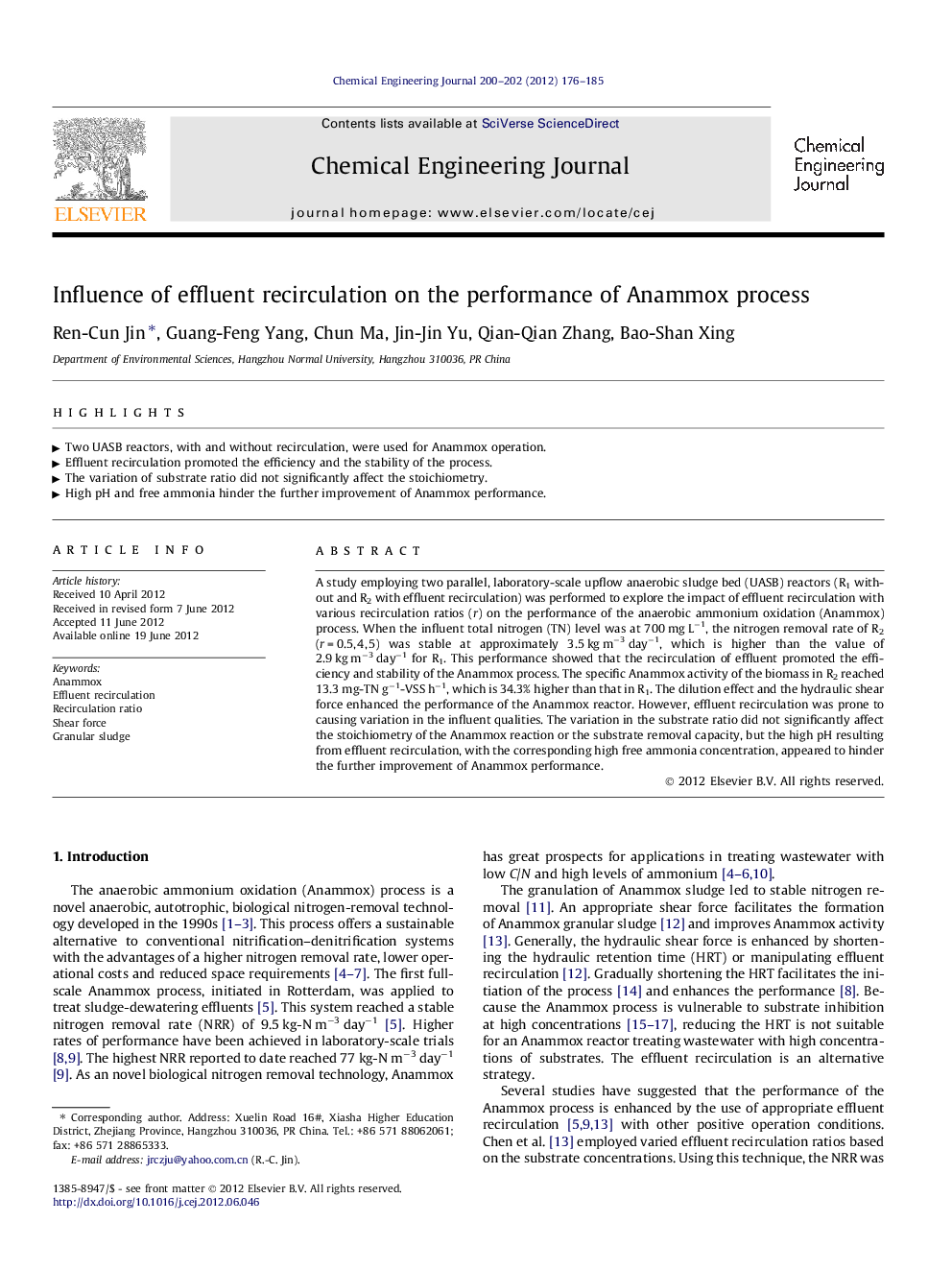| Article ID | Journal | Published Year | Pages | File Type |
|---|---|---|---|---|
| 149545 | Chemical Engineering Journal | 2012 | 10 Pages |
A study employing two parallel, laboratory-scale upflow anaerobic sludge bed (UASB) reactors (R1 without and R2 with effluent recirculation) was performed to explore the impact of effluent recirculation with various recirculation ratios (r) on the performance of the anaerobic ammonium oxidation (Anammox) process. When the influent total nitrogen (TN) level was at 700 mg L−1, the nitrogen removal rate of R2 (r = 0.5, 4, 5) was stable at approximately 3.5 kg m−3 day−1, which is higher than the value of 2.9 kg m−3 day−1 for R1. This performance showed that the recirculation of effluent promoted the efficiency and stability of the Anammox process. The specific Anammox activity of the biomass in R2 reached 13.3 mg-TN g−1-VSS h−1, which is 34.3% higher than that in R1. The dilution effect and the hydraulic shear force enhanced the performance of the Anammox reactor. However, effluent recirculation was prone to causing variation in the influent qualities. The variation in the substrate ratio did not significantly affect the stoichiometry of the Anammox reaction or the substrate removal capacity, but the high pH resulting from effluent recirculation, with the corresponding high free ammonia concentration, appeared to hinder the further improvement of Anammox performance.
► Two UASB reactors, with and without recirculation, were used for Anammox operation. ► Effluent recirculation promoted the efficiency and the stability of the process. ► The variation of substrate ratio did not significantly affect the stoichiometry. ► High pH and free ammonia hinder the further improvement of Anammox performance.
